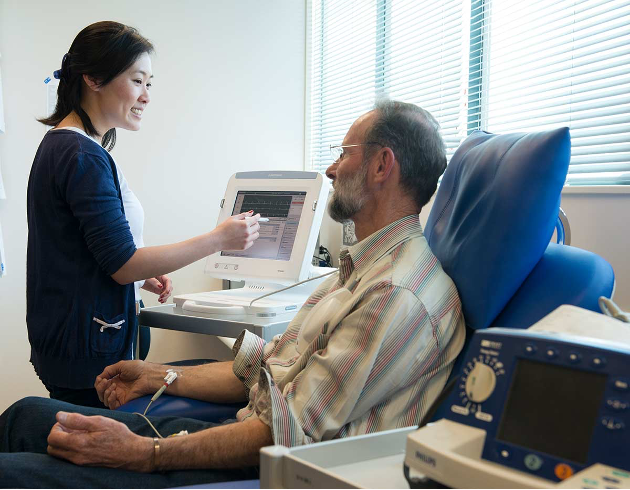300+ mln
ECGs are taken every year
90%
first gets cardiac symptoms
60%
could have been prevented
The problem
The main Cardiac Diagnostic device, the Electrocardiogram (ECG) Machine, is large, stationary, and user-unfriendly. ECG’s are currently made in hospitals by trained professionals, which are time-consuming, expensive, and are a single point in time diagnosis. One in three deaths in the Netherlands are due to cardiovascular problems. Most of these deaths (90%) occur out of the hospital.


Our solution
1. ECG at home
With the HeartEye device and supporting app, you or your medical professional can take clinical-standard ECGs without any wires.
2. Pocket size device
The main Cardiac Diagnostic device, the Electrocardiogram (ECG) Machine, is large, stationary, and user-unfriendly. Our solution offers a pocket size device.
3. Deep neural networks
Our algorithm can identify deviant cardiac patterns. The results will be divided into either acute, subacute or normal.
4. Medical grade
Diagnoses are made earlier and more accurate, decreasing cardiovascular mortality. Our patented device gives medical standard results.
How it works
1
The user scans
Hold the device against your chest and scan for a minute.
2
The app analyzes
The HeartEye app analyzes the heart rhythm and creates an ECG.
3
Results are given
The app will give advice based on your cardiac health.
Where to place?
The device needs to be placed at the center of the chest for around 30 seconds. The app will make a scan and analyses it afterwards to formulate an advice.

In depth
Developments
Although home-monitoring devices for rhythm disorders are getting more common, there is no multi-lead electrocardiography device available to detect acute ischemic heart disease in the home setting. The device can be used by patients at home, but also by the GP or in hospital settings where the standard 12-lead ECG is not readily available. The deep learning algorithm will be trained and optimized to process the output without human interaction and will provide the user with immediate feedback. With this device, patients will be able to keep track of their cardiac health and if required data can be send to a cardiologist for further analysis.
We have already developed a smart phone sized proof of principle device that can acquire a multi-lead ECG within 30 seconds at the push of button without the need for ECG-patches or professional equipment.
For the further development of this device we will closely work together with software partners experienced in medical software development and implementation. The final product will be a CE-ready standalone device, combined with software running on an external device that will analyze the data.
Potential market

Meet the team
To learn more about the team members behind the project, click the button below.
About us- They have a wearable but ECG’s are 1-lead, 3-lead or 6-lead, making them non-medical grade;
- Have not been tested in clinical studies;
- Competing companies focus on B2C rather than B2B.
In short, HeartEye is the only company with a medical grade ECG device that can service the B2B market.
Competition
In the future, improvements on the device should be performed:
- PCB redesign & battery consumption improvements;
- Include more sensors and feedback to users;
- Improve user experience with the App.
- Prepare device for use outside the clinic
Future plans
Our journey
August 2018
Proof of concept completed, establishment of miniECG 1.0
December 2019
Patent received with patent nr. 2021115
April 2020
Establishment of miniECG 2.0
March 2021
Incorporation of HeartEye B.V.
December 2021
Launch website www.hearteye.nl and start industrialising miniECG
The next step?
Always looking for customer feedback, please reach out ↓
Partners
This project is endorsed by






Get in touch
We need your help! Do you want to be part of this revolutionary journey and support novel medical technology that can greatly improve the health care system?
Don’t hesitate to shoot us a message.

rien@hearteye.nl

